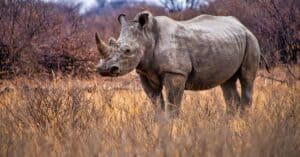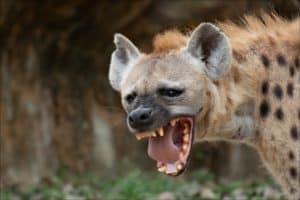Hyenas are one of those animals you see once, and they leave a long-lasting impression on you. Contrary to popular opinion, hyenas are not just animals that like to eat a lot and laugh maniacally; they are some of the most intelligent and most sociable animals to exist. They also have one of the strongest bite forces of any animal. These animals are common in parts of Africa, the Middle East, and Eurasia.
Several species of hyenas exist, but their existence can be traced back as far as millions of years ago. However, like most animals that have ancestors from so long ago, modern hyenas do not have much resemblance with their ancestors. The hyenas that existed before now were much bigger, and some were even believed to be more ferocious. These ancient hyenas had almost no fear and even hunted animals nearly double their body weight or more. In this article, you will learn about one such ancient hyena, the Dinocrocuta, where it lived, what it ate, and things that make it significantly different from modern hyenas.
Meet the Dinocrocuta
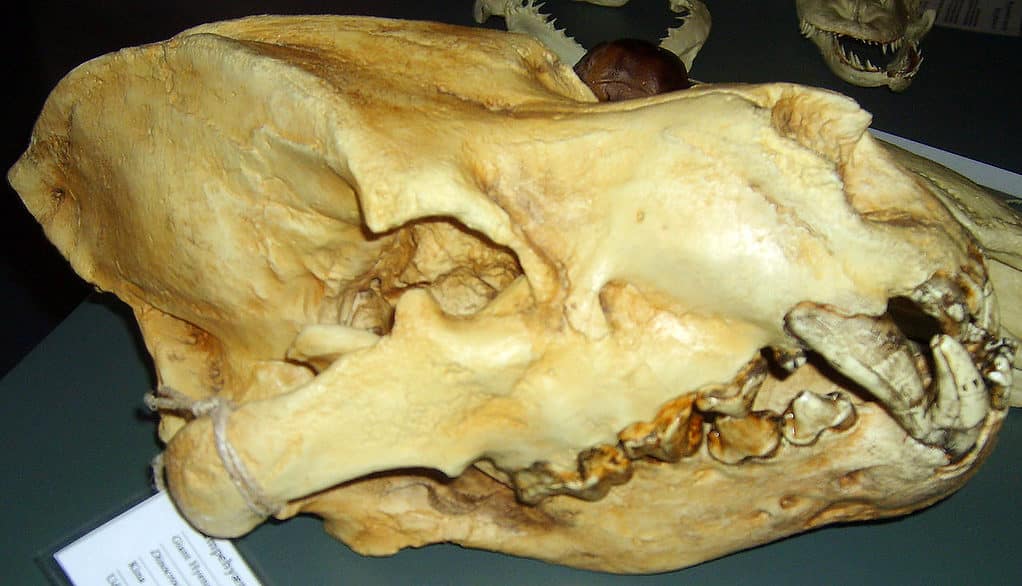
Dinocrocuta was prominent in Eurasia and parts of Africa.
©FunkMonk (Michael B. H.) / CC BY-SA 3.0 – License
As mentioned, ancient hyenas are believed by experts to be far more ferocious than modern ones, and the Dinocrocuta is no exception. The term Dinocrocuta translates to “terrible hyena,” with dino denoting horrible and the crocuta portion referring to the Crocuta genus, which is the home of contemporary hyenas. According to experts, these hyenas evolved over time to adapt to more recent conditions, which is why they look very different now.
The Dinocrocuta had a few species under it, with the biggest of them being the Dinocrocuta gigantea. As the name implies, this hyena was huge – it reached a length of over six feet and a shoulder height of around 4.3 feet. These animals also weighed over 650 pounds. Although not all species of Dinocrocuta are known, it is believed that not all of them were as big as the gigantea species. Even then, experts also believe that the smallest species would have still been bigger than modern hyenas.
Apart from their size, these hyenas were also very recognizable because of their sizable skulls which were over 17 inches long. Their massive skulls supported their jaws which were strong enough to tear off limbs from other animals and comfortably chew the bones. The well-developed attachment points for the muscles that close the jaw suggest that the head muscles produced forces strong enough to break bones. Despite having hyena-like appearances, Dinocrocuta were classified as Percrocutidae. This family’s members are distinguished by their enormous skulls and powerful jaws, and these traits were more clearly displayed by Dinocrocuta. However, because of their several physical similarities to modern hyenas, these animals are still classified under the same group as hyenas.
Dinocrocuta Distribution and Habitat
According to experts, these animals were prominent in Eurasia and parts of Africa. It is believed that they existed during the Miocene Epoch, around 4.5 million years ago, and their fossils have been found in parts of Asia and Africa. Based on the results obtained by experts from the analysis of these animals’ fossils, it was concluded that different species of the Dinocrocuta lived in different parts. For instance, the Dinocrocuta gigantea lived in Spain and some parts of China. This species could also be found in some areas between those two countries, such as Turkey, Greece, Bulgaria, and Mongolia. Some other species of this animal could be found in North Africa and parts of the Tibet region.
The first part of this animal’s fossils to be found were dental remains, after which a detailed description was published in 1903. One of the most well-known discoveries was the discovery of numerous fossils in Shaanxi Province in 1986, some of which contained the bones of the Dinocrocuta gigantea species. The collection included an entire skull, a portion of a skull’s front region with all of its teeth still intact, a shattered lower jaw, and a few non-cranial bones.
Diet: What Did the Dinocrocuta Eat?
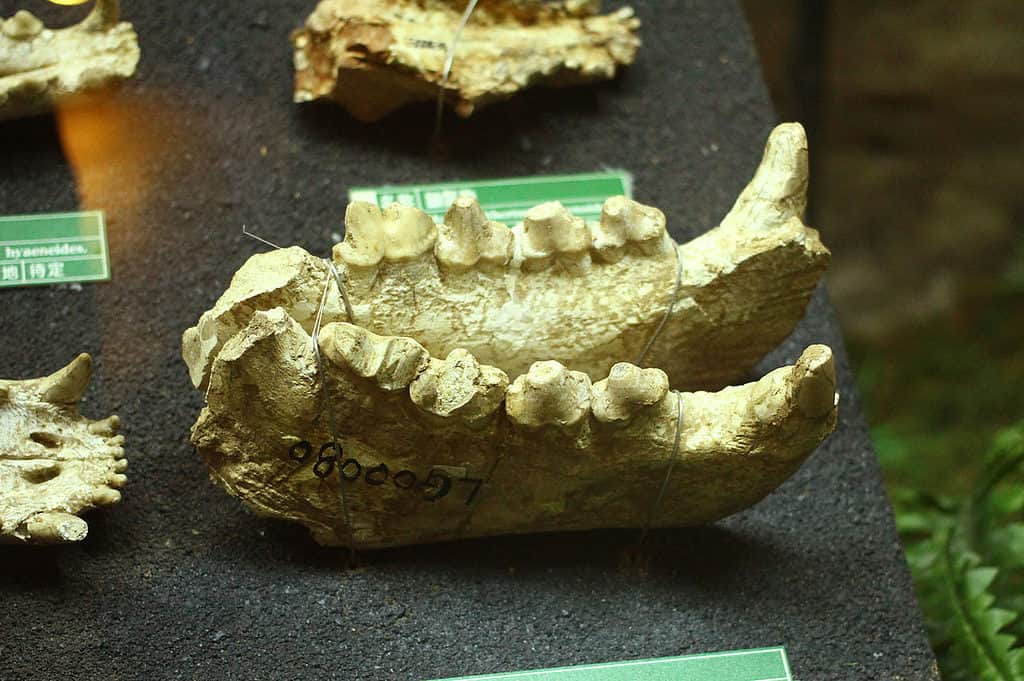
Dinocrocuta were carnivores that likely hunted herbivores like the Chilotherium.
©乌拉跨氪 / CC BY-SA 3.0 – License
As mentioned, these animals were carnivorous predators, and sometimes even liked to hunt animals that were bigger than them. Furthermore, the carnivore’s powerful jaws and fangs suggest that they were strong enough to kill large creatures on their own. However, their ability to crush bones shows that they also consumed carrion. As opposed to being blade-like, Dinocrocuta’s teeth were more conical, which would have given them much more tenacity when encountering hard objects like bones.
Though its sociable or solitary nature is currently unknown, the Dinocrocuta was undoubtedly a skilled predator of creatures like the tusked rhinoceros called the Chilotherium. There is evidence of a bite on one of the fossils of tusked rhinos from the Dinocrocuta. Dinocrocuta was likely kleptoparasitic like contemporary hyenas, meaning the creature could have challenged other carnivores and stolen their prey. The Dinocrocuta would have been among the most lethal carnivores of its day due to its enormous size, powerful bite, and strong dentition.
Dinocrocuta vs. Modern Hyenas
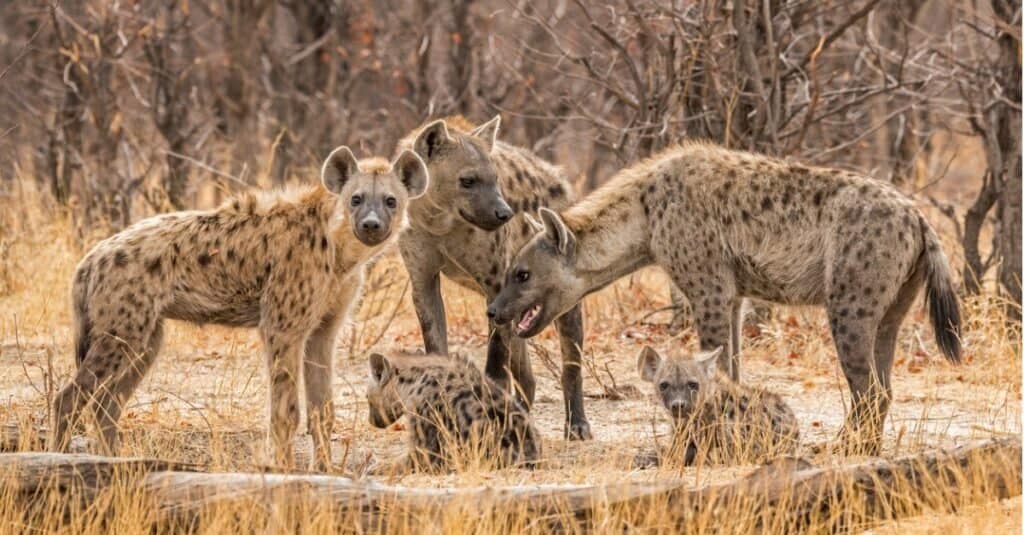
Hyenas are smaller than Dinocruta.
©iStock.com/Franz Schallmeiner
Although it has been established that the Dinocrocuta was not precisely a hyena, it still shared a lot of features with modern hyenas. The most obviously shared feature between both creatures is the way they look, the only difference being that modern hyenas are smaller than the Dinocrocuta. These days, hyenas do not grow as much as the Dinocrocuta, and their sizes vary according to their species, from 15 pounds to 121 pounds.
Apart from their appearance, these animals also share similar diet preferences. Both animals are carnivorous predators and hunters, with modern hyenas preferring to hunt and eat as a group. Both animals also do not have a problem with eating dead animals or stealing prey from other predators.
Up Next:
What Is The Bite Force Of A Hyena?
What Do Hyenas Eat? A Guide to Their Diet
Discover the 12ft Armadillo That Weighed 2.5 Tons And Had a Spiked Club Tail
Meet the Giant Short-Faced Hyena That Was as Large as Today’s Lions
The photo featured at the top of this post is © 2,953 × 1,720 pixels, file size: 1.07 MB, MIME type: image/jpeg – License / Original
Sources
- , Available here: https://www.researchgate.net/publication/336578352_Basicranial_morphology_of_Late_Miocene_Dinocrocuta_gigantea_Carnivora_Hyaenidae_from_Fugu_Shaanxi
- , Available here: https://www.mindat.org/taxon-4833224.html
Thank you for reading! Have some feedback for us? Contact the AZ Animals editorial team.




